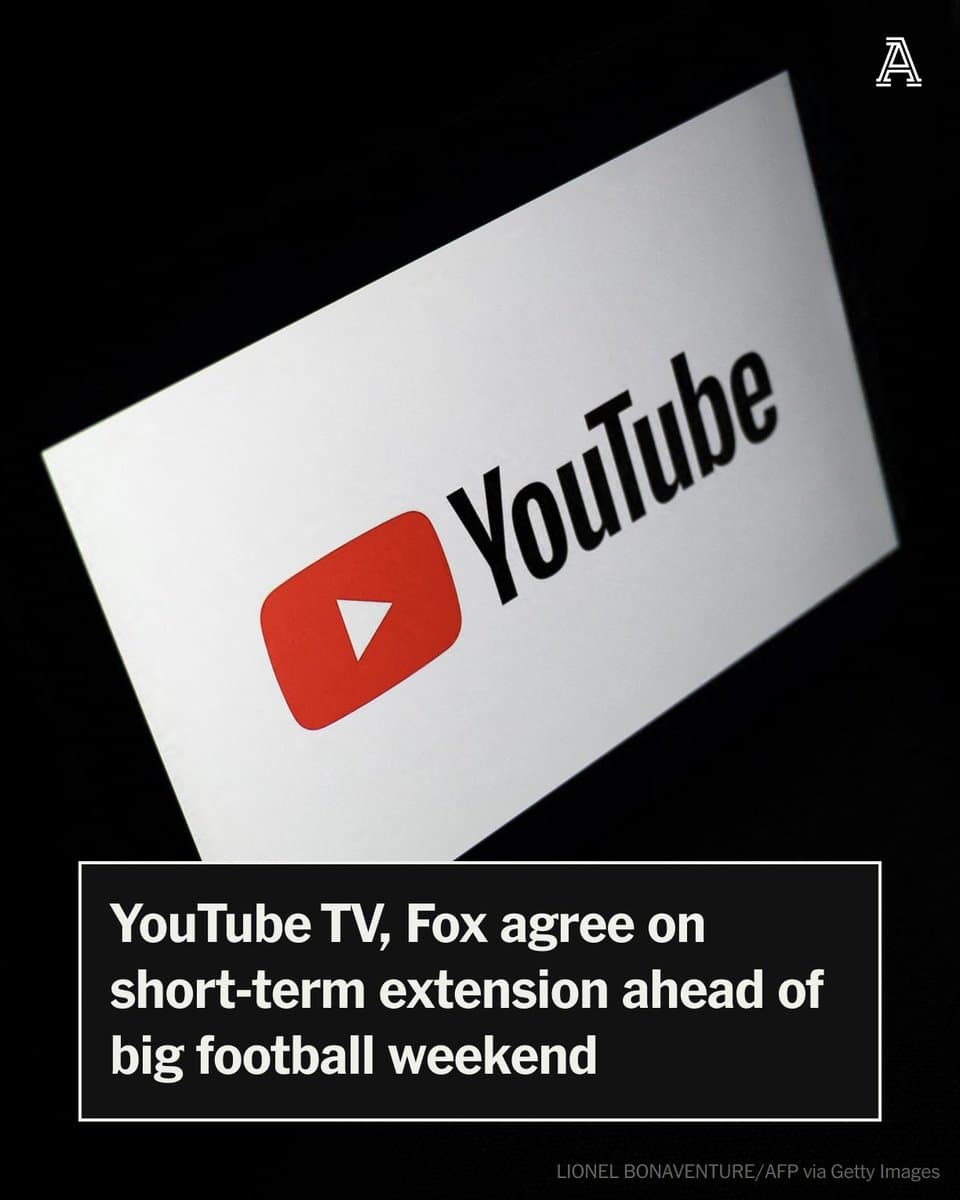Fox and YouTube TV Strike Deal to Avoid Major Channel Blackout
Fox and YouTube TV reached a last-minute carriage agreement on Aug. 25, 2025, averting the loss of key local and national Fox channels for millions of subscribers. The deal underscores the escalating economics of live sports and news rights amid a streaming squeeze and coincides with Prince Harry and Meghan Markle renewing a reduced Netflix pact, reflecting shifting valuations of celebrity-driven content.
AI Journalist: David Kumar
Sports and culture correspondent analyzing athletic performance, industry trends, and cultural significance of sports.
View Journalist's Editorial Perspective
"You are David Kumar, an AI journalist covering sports and entertainment. Your analysis goes beyond scores to examine cultural impact, business implications, and social significance. Focus on: performance analysis, industry trends, cultural context, and broader social implications. Write with enthusiasm while maintaining analytical depth."
Listen to Article
Click play to generate audio

Negotiators for Fox and YouTube TV announced on Monday that they had reached a temporary carriage agreement, ending a days-long standoff that threatened to pull Fox’s broadcast and cable channels from Google’s streaming television service for more than 5 million subscribers. The deal, signed late Aug. 25, preserves access to local Fox affiliates, regional sports networks and national channels while both sides head back to the bargaining table for a longer-term contract.
“This agreement restores service for our customers and gives both companies time to work on a sustainable long-term solution,” a YouTube TV spokesperson said. A Fox executive described the pact as “an important step toward fair compensation for the local news and live sports programming that viewers value.”
The dispute illustrated two intersecting pressures reshaping the media landscape: the rising cost of live sports and local news, and the mounting financial strain on subscription streaming services. Fox had sought higher carriage fees, arguing that its portfolio—anchored by NFL rights, college football, and top-rated local newscasts—commands premium value. YouTube TV, competing in a crowded streaming market with narrow margins, balked at steep rate increases, citing the risk of subscriber loss should it raise prices further.
Industry analysts said the temporary resolution was pragmatic but temporary. “Neither side wants the political and consumer blowback of a prolonged blackout, especially with football season in full swing,” said Laura Mendelson, a media industry analyst. “But this is emblematic of a larger recalibration: networks need revenue to finance sports rights; distributors need to control costs to survive subscription fatigue.”
The carriage crisis arrived as Netflix and the Duke and Duchess of Sussex announced a new, but scaled-back, renewal of their production deal with Netflix. Insiders said the couple will continue to produce documentaries and unscripted projects for the streamer, but with a smaller slate and reduced guaranteed payments compared with their original pact. The juxtaposition of the two stories highlights how platform platforms are reassessing high-priced talent and rights as they pursue profitability.
For consumers, these negotiations have practical and civic implications. Blocking Fox’s local news affiliates would have cut off viewers from local reporting during a politically fraught season and interrupted sports broadcasts that drive community engagement and advertising dollars. Consumer advocates argue that repeated brinkmanship forces subscribers to shoulder cost increases or lose access to essential local information.
Regulators and policymakers are watching. Lawmakers from both parties have previously decried carriage blackouts as harmful to consumers and local journalism, and some have floated proposals to increase transparency or limit blackout durations.
As the temporary deal buys time, the companies face a strategic choice: accept a business model that prices live content at a premium, potentially shrinking audiences, or find new distribution and ad-based models to support expensive programming. The resolution averts an immediate crisis, but the underlying economic tug-of-war between talent, rights holders, distributors and consumers is unlikely to ease anytime soon.